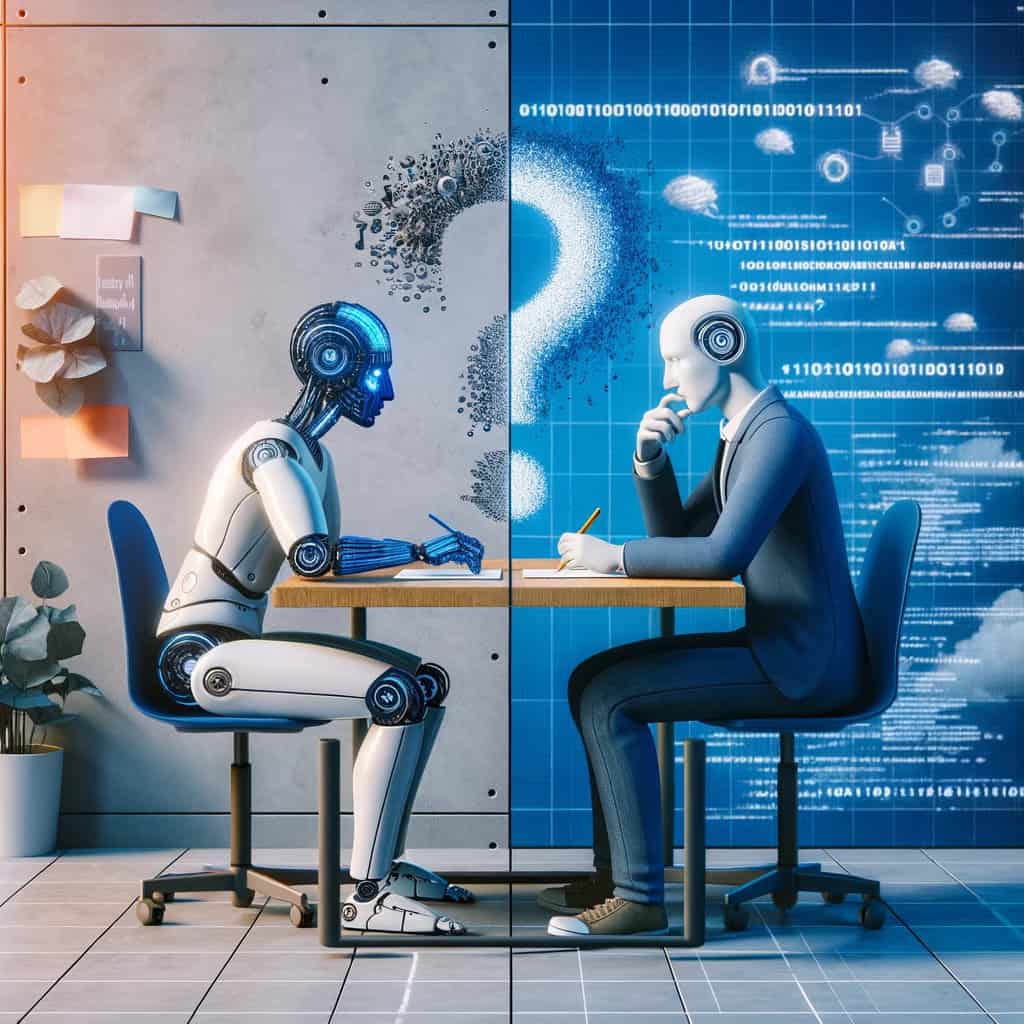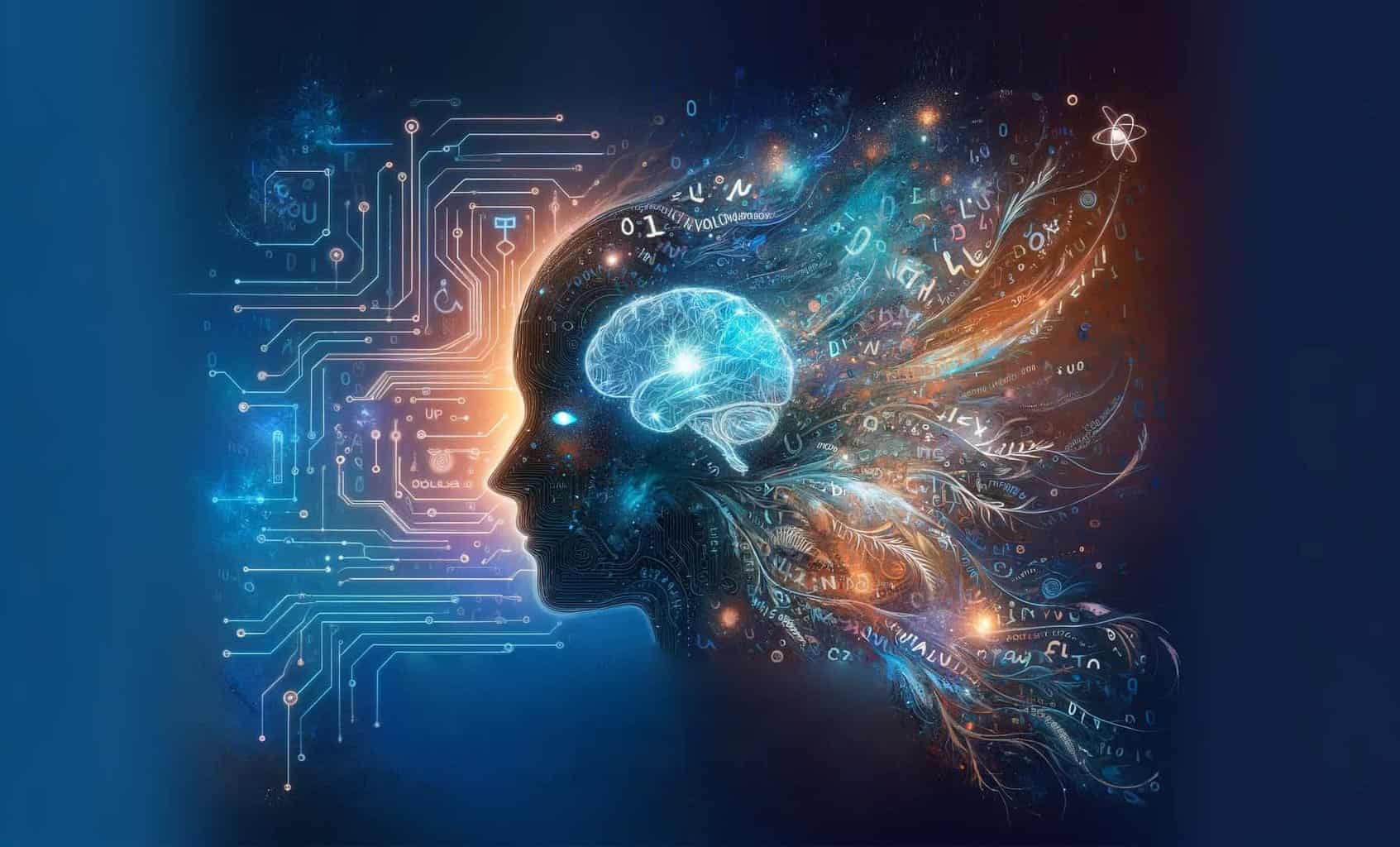In today’s fast-paced world, we have countless programs and technologies at our disposal, especially artificial intelligence (AI), to power our content creation and create great content.
This innovative technology has remarkable capabilities. It can generate tons of text in seconds, making it an invaluable tool for both experienced marketers and aspiring entrepreneurs.
But we also have to face some new challenges, such as the gradual decline of authenticity and the loss of the all-important human connection.
The emergence of AI for content creation has undeniable benefits and it has revolutionized the way we produce content. It ushered in an era of unparalleled efficiency and productivity. AI can create a wealth of articles, blogs, and marketing materials with the click of a button to ease the workflow of content creators worldwide. But behind the scenes, some problems are already becoming visible.
With the increasing presence of AI-generated content, we face a hard reality. These machine-produced texts often lack humanity, the so-called human touch.
AI struggles to understand and reproduce emotions, experiences, and authentic communication. While AI can replicate patterns and data-driven information, it still leaves much to be desired in the areas of creativity, comprehensibility, and human warmth. As a result, readers and consumers crave deeper, authentic connections.
They crave content that conveys emotions. Content containing beliefs and experiences. AI-generated content often falls short in this regard and alienates the reader.
This leads to a crucial question: “How can we harness the efficiency and productivity of AI while adding a much-needed human touch to our content?” How can we bridge the gap between humans and machines and ensure our content is relatable, engaging, and authentic?”
This is the challenge we face to effectively leverage the complex relationship between AI and human writing. In the following sections of this article, we will delve deeper into how AI text transformation works, explore the differences between AI and human-generated texts, learn the benefits of humanizing AI content, and upcoming challenges as well as practical tips for humanizing AI-generated content.
Let’s embark on an enlightening journey and reveal the secrets of AI writing. Find out how you can give your texts more authenticity and emotional depth.
Why is it important to humanize AI writing?
The rise of AI in content creation is undeniable. It has transformed the online landscape by improving speed and efficiency. However, the question looms – why should we prioritize humanizing AI writing? The answer lies in the need for effective communication.
As AI rapidly developed, its role in content generation also changed. AI programs have already become the preferred tool for quick and efficient content production, especially for marketers and businesses looking to meet the demands of an ever-hungry online audience.
The desire for speed and efficiency is undeniable. AI can meet all of these needs.


Never Worry About AI Detecting Your Texts Again. Undetectable AI Can Help You:
- Make your AI assisted writing appear human-like.
- Bypass all major AI detection tools with just one click.
- Use AI safely and confidently in school and work.
However, this also leads to new challenges. Content isn’t just about efficiency or productivity, it’s about the heart and soul. It’s about connecting with our readers.
Communication goes beyond the simple exchange of information. It encompasses subtle nuances of different emotions and personal experiences. Effective communication not only conveys facts, it involves the reader, speaks to them on a personal level, and promotes understanding.
This is where the humanization of AI content comes into play. It’s not about making the text sound more like a human. It’s about preserving the values of communication. We need to ensure that our content is not only informative but also engaging, relatable, and able to create a real connection with the reader.
Essentially, humanizing AI text is our way of recognizing that while technology can help us in many ways, it currently lacks the human touch.
In our pursuit of efficiency, we must not lose sight of why we communicate in the first place – to connect, inspire, and engage with our audiences on a deeper level.
How Does an AI-to-Human Text Converter Work?
Before we dive into the importance of humanizing AI content, we need to understand how AI-to-human text converters work. These sophisticated text programs play a crucial role in bridging the gap between humans and machines.
AI converters are cleverly designed to add intricacies and human-like qualities to AI-generated content. The process consists of precise orchestration of algorithms and speech analysis.
Firstly, they meticulously break down texts into their components. Then they examine every wording, every sentence, and every paragraph. Next, the converter uses advanced algorithms to closely examine each element and compare it to a data set of human-authored content. This step is critical to identifying areas in the AI-generated text that require improvement.
Then, the converter employs advanced algorithms to scrutinize each component, evaluating it against a repository of human-written content. This step is critical in identifying areas within the AI-generated text that require enhancement.
The converter then goes to work by changing factors such as tone, style, and readability. AI creates a text that is not only grammatically correct but also appears more natural and appealing. The result is the metamorphosis of machine-generated text into content that sounds like it was created by a human.
It is a remarkable fusion of the technological strengths of AI and the artistic finesse of human expression.
By understanding the complex processes behind AI-to-human text programs, we can use them more efficiently to not only create content faster but also give AI content the necessary human touch.
What is the difference between AI writing and human writing?
AI excels in efficiency, speed, and quantity. Human writing has emotional depth, authenticity, and personality.
AI replicates data but fails when it comes to creativity. Human writers add personal experiences to their content and make a connection with the reader.
In essence, AI provides efficiency, and humans provide emotion. Humanizing AI content maintains efficiency but adds the much-needed human touch.
What Are the Benefits of Our AI-to-Human Text Converter?
Curious about the perks of infusing human warmth into AI-generated content? Let’s dive in:
Efficiency and Speed:
AI’s lightning-fast content generation is undeniable. By humanizing the AI- texts, we take advantage of this efficiency but also give them a touch of authenticity. This means not only can we create content faster, but we can also engage our audience better.
Customization and Flexibility:
Human writing possesses the unique ability to adapt to specific audiences, create personalized content, and tailor it to the audience. This is where AI often fails. By shifting to a more human tone, we unlock the potential for richer, more tailored content experiences.
Accuracy and Consistency:
AI-to-human text converters offer a notable advantage in improving content, especially in terms of accuracy and consistency. This transformation makes the text more reliable and trustworthy.
These benefits highlight the transformative power of humanizing AI-generated content, as it allows us to harness the best aspects of AI but also preserve the emotional depth and authenticity of human expression. Ultimately, this fusion of efficiency and emotion, precision and personality enrich our content landscape.

What are the challenges of changing AI writing to sound more human?
While the advantages of making AI writing more human are evident, it’s crucial to recognize and address the hurdles. These challenges include:
1. Lack of Context and Personalization:
AI often struggles to understand the context and subtleties inherent in content. This can result in text that feels impersonal and detached, missing the mark on a message.
2. Inconsistency and Errors:
Despite advances in AI technology, it remains susceptible to generating content that is inconsistent and prone to errors. This inconsistency can disrupt the flow of reading and hurt the reading experience.
3. Lack of Emotion or Personality:
One of the main differences between AI and human writing lies in emotion and personality. AI lacks the emotional depth and ability to give writing a unique personality that humans naturally bring to their work.
4. Difficulty in Distinguishing from Human-Written Text:
Even with intensive efforts to humanize AI content, situations may arise where AI-generated text can still be distinguished from human-written text. Perfection is and remains an enormous challenge.
We must rise to this challenge to successfully bridge the gap between AI and human writing. This includes refining AI algorithms, improving understanding of context, minimizing errors, and finding innovative ways to add personality to AI-generated content.
The pursuit of seamlessly blending AI and human elements in writing is an ongoing development, but one that promises richer and more authentic content.
How to make AI writing more human?
To bridge the gap between AI and human writing, here are some tips:
Embrace Your Unique Voice
Let your personality shine through your writing. Add humor, personal anecdotes, and real experiences to make your content relatable.
Connect with Your Audience
The key to success is understanding your target group. Conduct surveys, interact with your fans on social media, and collect feedback. Use this information to tailor your content to your reader’s needs and preferences.
How do I make my AI-generated text undetectable?
We want to create texts that cannot be recognized as AI-generated content. To achieve this, we need to improve our writing skills. Practice, read lots of articles, and collect active feedback. Don’t be afraid to adapt your writing style.
How does the future of AI writing integrate with human writing?
The future is in our hands and is undoubtedly people-centered. Companies and content creators invest in skilled writers and editors to create content that resonates with readers. While AI remains a valuable tool, it can only be used effectively by experienced human writers.
Conclusion
In the ever-evolving world of content creation, the transition from AI writing to human-driven content is gaining momentum. Authenticity, commitment, and SEO benefits make this change understandable and indispensable.
But here’s the kicker: You can enjoy the benefits of both worlds. Undetectable AI seamlessly combines the efficiency of AI with the authenticity of human writing. Try it today and use the widget below to start writing content that resonates with the reader (English only).
